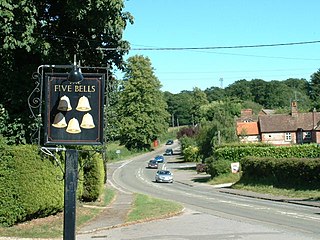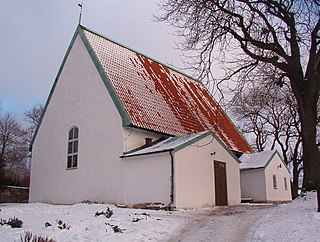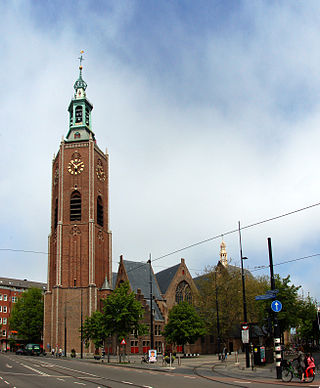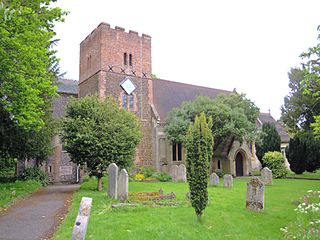
The Dorpskerk (literally 'village church') is a Protestant church building at Kerkplein 1 in the centre of the Dutch village of Heemskerk. Its tower is 13th-15th century whilst the rest of the building dates to 1628-1629.

The Dorpskerk (literally 'village church') is a Protestant church building at Kerkplein 1 in the centre of the Dutch village of Heemskerk. Its tower is 13th-15th century whilst the rest of the building dates to 1628-1629.


It is first mentioned in literary sources in 1063, though its appearance at that time is unknown. Over the centuries, a church was built on the site of the 17th-century one from tuff, a gray volcanic stone from the Eifel. The tower was first built in the 13th century from so-called kloostermoppen (large baked bricks usually used to build monasteries). The church and the main bell in its tower (the latter dating to 1464 and made by Steven Butendiic, a bell founder from Utrecht) were both dedicated to Saint Laurentius.
The substructure of the tower is Romanesque but the superstructure is Flemish Gothic, with the latter probably built some time between 1400 and 1450. It originally had a spire, which collapsed in 1585 due to a lightening strike (the repairs in a different stone are still visible). The tower bell could be used to warn the villagers of storms, fires or other dangers.
The village's noble families had their own burial vaults in two chapels of the church from the early 14th century onwards, whilst the Reformation led to the churchyard becoming a municipal cemetery. In its churchyard is buried Jacob, father of the artist Maarten van Heemskerck - a replica of his 16th century obelisk remains on the gravesite, whilst the original is now inside the church. During the Siege of Alkmaar in 1573 the Spanish troops demolished all but the tower to avoid it being set on fire. After their withdrawal the Protestants rebuilt it as a plain Gothic-style hall church with no choir. In 1728 the present-day rooster was added to the tower's top and in 1798 the tower became municipal property (as it still remains).
In 1800 the last remains of the two chapels were demolished and in 1829 further burials within the church were banned. A consistory was added in 1868. The tower bell was removed to be taken to Germany during the Second World War, but the ship intended to take it there ran aground near Urk and sank. After the war, the bell was identified and in 1946 it was returned to the church undamaged.
On 16 December 1943 a British Avro Lancaster with seven men on board crashed in the Kruisberg dunes near the village and were buried in the churchyard, with a memorial unveiled near their graves on 3 May 1987. Each of the seven graves has been adopted by pupils of a different village school, who leave floral tributes there on 4 May and 16 December. The tower was restored in 1970-1973 and 2012-2013 and is now a rijksmonument. [1] Since 1967 both the tower and church have been rijksmonuments.

St. Martin's Cathedral, Utrecht, or Dom Church, is a Gothic church dedicated to Saint Martin of Tours, which was the cathedral of the Diocese of Utrecht during the Middle Ages. It is the country's only pre-Reformation cathedral, but has been a Protestant church since 1580.

St. Mary's Church, Walthamstow, is a Church of England parish church in Walthamstow Village, a conservation area in Walthamstow, east London. It was founded in the 12th century and is still a working church with a cafe, Play Area and Exhibition Space open during the week. St Mary's also hires rooms and spaces in both the church and nearby St Mary's Welcome Centre to outside groups. It retains over one hundred and fifty brasses and monuments, the oldest dating from 1436, though all that now remains of the original Norman church is some pillar bases and the chisel marks on them. In 2021-2022, the church was extensively renovated with support from the National Lottery and now includes a modern extension which contains the Parish Office and an Exhibition Space.

The Grote Kerk or St.-Bavokerk is a Reformed Protestant church and former Catholic cathedral located on the central market square in the Dutch city of Haarlem. Another Haarlem church called the Cathedral of Saint Bavo now serves as the main cathedral for the Roman Catholic Diocese of Haarlem-Amsterdam.

Black Bourton is a village and civil parish about 2 miles (3 km) south of Carterton, Oxfordshire. The village is on Black Bourton Brook, a tributary of the River Thames. The 2011 Census recorded the parish population as 266. RAF Brize Norton adjoins the parish. The northern boundary of the parish is along the middle of the main runway of the airfield.

Colchester in Essex, England, has a number of notable churches.

The Zuiderkerk is a 17th-century Protestant church in the Nieuwmarkt area of Amsterdam, the capital of the Netherlands. The church played an important part in the life of Rembrandt and was the subject of a painting by Claude Monet.

St Mary the Virgin is a Church of England parish church in Henbury, Bristol, England.

Wickham is a village about 5.5 miles (8.9 km) north-west of Newbury, Berkshire, England. The M4 motorway passes just north of it. It is in the civil parish of Welford.

The Pieterskerk is a late-Gothic Dutch Protestant church in Leiden dedicated to Saint Peter. It is known today as the church of the Pilgrim Fathers, where the pastor John Robinson was buried. It is also the burial place of the scientist Willebrord Snellius.

The Vrouwekerk or Vrouwenkerk, originally known as the Onze-Lieve-Vrouwekerk, was a 14th-century church in the Dutch city of Leiden. In the early 17th century, the church was attended by the Pilgrims as well as by the first colonists to settle on Manhattan.

The Sint Janskerk in Gouda, the Netherlands, is a large Gothic church, known especially for its stained glass windows, for which it has been placed on the list of the top 100 Dutch monuments.

The Parish Church of Saint Mary, North Leigh is the Church of England parish church of North Leigh, a village about 3 miles (5 km) northeast of Witney in Oxfordshire.

The Lundby Old Church is a church in Lundby, a borough of Gothenburg, Sweden. It belongs to the parish of Lundby in the Diocese of Gothenburg. It is one of the seven preserved medieval churches in Gothenburg, and the only one of them representing Gothic architecture. It originates from the 14th century, but the bell tower had not been erected until 1634. The church has been renovated many times, most recently in 1998.

The Great Church or St. James' Church is a landmark Protestant church in The Hague, Netherlands. The building is located on the Torenstraat, named for its high tower. Together with the Binnenhof, it is one of the oldest buildings in The Hague. Members of the House of Orange-Nassau have been baptised and married there. The latest are King Willem-Alexander of the Netherlands and his daughter and heir apparent Catharina-Amalia, Princess of Orange.

The English coastal city of Brighton and Hove, made up of the formerly separate Boroughs of Brighton and Hove in East Sussex, has a wide range of cemeteries throughout its urban area. Many were established in the mid-19th century, a time in which the Victorian "cult of death" encouraged extravagant, expensive memorials set in carefully cultivated landscapes which were even recommended as tourist attractions. Some of the largest, such as the Extra Mural Cemetery and the Brighton and Preston Cemetery, were set in particularly impressive natural landscapes. Brighton and Hove City Council, the local authority responsible for public services in the city, manages seven cemeteries, one of which also has the city's main crematorium. An eighth cemetery and a second crematorium are owned by a private company. Many cemeteries are full and no longer accept new burials. The council maintains administrative offices and a mortuary at the Woodvale Cemetery, and employs a coroner and support staff.

The Church of St Nicholas is a Grade I listed parish church in the village of Mavesyn Ridware, Staffordshire, England. The church is situated at the eastern end of the village approximately 370 m (1,210 ft) north of the River Trent and just to the north of the Gatehouse of the former ancient Manor House. Although medieval in origin the church was partly demolished in 1782 leaving only the north aisle and west tower remaining from the older structure. The church is one of only 12 Grade I listed buildings in Lichfield District. It is listed as such as it is a complete example of a late 18th-century church rebuilding including a very rare late 18th-century and early 19th-century conversion of a medieval aisle to the former church into a family chapel with neo-medieval fittings and monuments.

St Augustine's Church is a Grade I-listed Gothic Revival nineteenth-century parish church in Penarth, Vale of Glamorgan, Wales.

The Church of St Michael the Archangel is the parish church for the town of Aldershot in Hampshire. Dating to the 12th century with later additions, there was almost certainly an earlier church on the site. The existing structure is a Grade II listed building and is located beside Manor Park.

St Mary Magdalene Church is the Church of England parish church in the village of Ickleton in Cambridgeshire. The church is a Grade I listed building. Its parish is part of a combined benefice with those of St Peter's, Duxford and SS Mary and John, Hinxton.

The Church of St. Thomas à Becket is the Church of England parish church of Box, Wiltshire, in south-west England. It is one of a number of churches named after Thomas Becket following his martyrdom. The church has 12th-century origins and was substantially remodelled in the 14th, 15th, 18th and 19th centuries. It is a Grade I listed building.